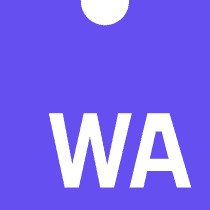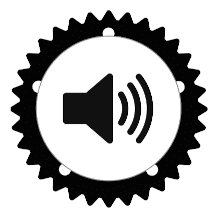MOSS Audio Development Grant - Reaching the Final Milestone
2020-07-15
Nannou is a creative coding framework that aims to make it easy for artists to express themselves with simple, fast, reliable code.

Towards the end of 2019, nannou had the honour of being awarded a grant as a part of the MOSS Mission Partners track. The proposed work aimed to improve the state of some foundational crates within the Rust audio ecosystem.
We are proud to announce that today marks the completion of the goals outlined in our original proposal! The following describes our journey through the work, the unexpected hurdles, the pleasant surprises, and a hint of what we wish to focus on next.
Addressing long-standing issues in CPAL
One of nannou's core design tenets is to prefer pure-Rust solutions over bindings to other languages where possible. This often means assisting in driving forward progress upstream and being part of the change we want to see.
CPAL, the Cross Platform Audio Library, is a major collaborative effort by the Rust audio community to develop a low-level, portable API around the popular audio I/O hosts available on major platforms. A large part of our work involved addressing some of CPAL's long-standing issues.
Non-Blocking Streams
The first step was to assist in landing a major overhaul of the way events are handled throughout CPAL (#354). Previously, CPAL exposed a single EventLoop API that owned all devices and streams would block when it was run. This overhaul refactored CPAL to more closely match modern audio APIs, instead providing a per-stream, non-blocking API and allowing audio processing to occur on a high-priority thread managed by the host. This work was a significant collaborative effort originally sparked by ishitatsuyuki. Major breaking changes like this in cross-platform libraries are particularly difficult, as individual maintainers rarely have access to every supported platfrom on hand. As a result, coordination and communication between multiple contributors is often essential.
Dynamic Sample Formats
Next we aimed to improve the ergonomics of working with buffers of a dynamically selected sample format in a manner that aimed to better take advantage of Rust's type system (#359). Previously, users were required to specify their desired sample format via an enum variant and then match on the given buffer type once every callback, despite the API indicating that the sample format is supported prior to the streams beginning. To improve upon this, we refactored the API to allow the user to choose between static sample format selection (via a type) or dynamically handling the sample format chosen by the host (see the raw stream builder alternative method). A big thanks to Ralith for their critical feedback and follow-up PR that resulted in a much nicer overall outcome.
Stream Timestamps
One glaring hole in CPAL's stream API has been the lack of timestamps associated
with stream events. System timestamps are essential for many audio applications,
particularly those that require accurately synchronising multiple different
media formats like video playback or multimedia workstations. After some
research into existing solutions and drafting up a proposal
(#363), we landed a new
StreamInstant API (#397). The
work aims to address this gap by providing system timestamps for the moment
audio is captured via an input device, delivered to the user via callback, and
played back via an output device with a friendly API modelled after the
std::time::Instant type.
Requesting Buffer Sizes
Possibly the most sought after and frequently requested change of all was the ability to request audio buffers of a specific size (#205). Having the ability to change the size of the buffer used by the device to capture or play back audio allows users to control the trade-off between low-latency and energy efficiency. This is a major priority for interactive audio applications like digital audio workstations and games, seemingly two of CPAL's major user groups. In #401 we landed support for this, giving the user the option to request a specific buffer size or allowing the host to fallback to some default. A big thanks to sniperrifle2004 who closely reviewed the ALSA host implementation, caught some mistakes and pointed out some vital quirks in the ALSA API that needed addressing.
Amidst these changes there were of course other minor unplanned tweaks and
patches that made sense to address in between. These included switching from
failure to the lighter and more library-friendly thiserror crate
(#340), renaming types to better
suit audio library conventions
(#371) and many
others.

CPAL + WASM
One of our major goals for nannou is to eventually allow users to compile and
run their sketches or apps on the web by targeting WASM, WGPU, and WebAudio. In
turn, one of our goals for this period of work was to make a start on a WASM +
WebAudio host for CPAL. CPAL contributor dpeckett beat us to the punch with
their proof-of-concept in #372 and
ishitatsuyuki provided a simple wasm-beep example that made it much easy to
follow and test the work locally.
After rebasing and updating dpeckett's work for the new timestamp and buffer
size APIs (#406), and adding
ishitatsuyuki's wasm-beep as an official cpal example
(#416), CPAL is looking promising
as a simple way to target both native platforms and the modern web in pure Rust!
To accompany the example, we have added a step-by-step tutorial to CPAL's wiki describing how to setup your CPAL project to target the web. To demonstrate, we've created a (veeery basic) web page where you can test out CPAL in the browser right now!
NOTE: There's a tiny WAV embedded in the WASM, so it might take a couple of seconds to download the audio on the first "Play". The demo seems to work nicely on desktop Firefox and Chrome but no luck on Safari or Edge just yet, we are yet to investigate.
Here is a link to the repo for this demo in case you would like to take a look.
"sample" becomes DASP - Digital Audio Signal Processing
When working with low-level audio in code, there is a common set of patterns and abstractions that the vast majority of audio libraries and applications apply. Supporting conversions between various sample formats, working with slices of both interleaved and non-interleaved data, rate interpolation for converting between different sample rates, just to name a few.
The sample crate aimed to provide these fundamentals for working with PCM
(pulse-code modulation) DSP (digital signal processing). In other words, sample
provided a suite of low-level, high-performance tools including types, traits
and functions for working with digital audio signals.
The name sample is a remnant of the crate's original goal at inception which
was to provide a simple Sample trait abstraction along with a well-tested
suite of conversions between the most commonly encountered sample format types.
Since then the crate gained more contributors and grew to cover more of the
aforementioned fundamentals with a collection of abstractions designed to
interoperate in a nice manner. In turn, the original name began to make less
sense.
sample has been renamed to dasp, a name that better aligns with the goal of
the project - to provide a library akin to the std, but for digital audio signal
processing. As a part of this
refactor, the crate has been split
into a collection of feature-gated sub-crates, greatly improving modularity and
allowing users to precisely select the tools and abstractions that they need.
You can find a simple overview of the available crates
here.
dasp_graph
dasp_graph is a new addition to the dasp crate
collection for dynamically creating and editing audio graphs. The crate is
targeted towards users who require an efficient yet flexible and dynamically
configurable audio graph. Use cases include virtual mixers, digital audio
workstations, game audio systems, virtual modular synthesizers and related
applications where the ability to add and remove nodes and re-route audio at
runtime is a must.
This work has been a long-time coming and is the result of many discussions in
the rust audio community and lessons learned over the last few years of working
with rust and audio. You can read more about dasp_graph, its motivations and
usage at the PR and
docs.rs.
Future Work
While we are happy with the work achieved over the past few months, there is of course much more to be done! Some next steps that come to mind for CPAL include:
- Resolve some minor follow-up web target issues.
- Improve mobile target support (iOS, Android).
- Events for handling the arrival/removal of devices (#373).
- Improve handling of non-interleaved audio data layouts (#367).
- Duplex stream support (#349).
CPAL & cubeb
During our work we also came across cubeb. Like CPAL, cubeb is a cross-platform audio I/O library, though implemented in C and C++. The project is the audio backend currently in use by Firefox, and an early effort at porting parts of the project have begun at cubeb-rs. We would love to see an exploration of how the two projects might collaborate and potentially combine efforts to achieve the goal of creating a nice, pure-Rust, cross-platform audio I/O experience.
Updating nannou
Of course, we are excited to land all of these recent improvements in nannou! In particular, this allows us to begin experimenting with running nannou sketches and applications on the web! Stay tuned.
Acknowledgements
Our work is but a small fraction in the grand scheme of Rust audio development - there are many others doing great and important work! Consider joining the rust-audio discourse, following the repositories at the RustAudio Github organisation or joining the fresh #rust-audio Matrix channel to follow along and join the community.
Thank you again to Mozilla and the MOSS team for giving us this opportunity and including us as a Mission Partner! Open source software tends to form the digital foundation of the society we live in. While it is difficult to predict which projects will succeed and reach such a foundational status, many would never get the chance without generous opportunities like this. Thank you!
Supporting Nannou
While this contribution marks a significant milestone in Nannou's quest for sustainability, we still have a long way to go. If you are interested in supporting Nannou's development, please consider becoming a contributor at our open collective page.
If you would like to get to know our community a little better or simply hang out with some like-minded creative coders, feel free to join us on matrix or if you'd prefer, the bridged slack channels!
